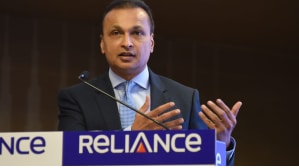Here’s an acronym that you probably hear almost everyday on business television – CDMO. Contract Development and Manufacturing Organization (CDMO) are flexible third-party service providers that are entrusted with all the stages of the process of making medicines – providing services in the research and development stages, offering support in manufacturing, and providing formulating and finishing processes.
The rise of CDMO market
India’s Contract Development and Manufacturing Organization (CDMO) market is witnessing a strong growth trajectory driven by a confluence of factors, including cost advantages, technological advancements, and a strong regulatory framework. According to a report by Boston Consulting Group (BCG), the sector is poised to secure a 4-5 per cent share of the global CDMO market thereby strengthening India’s position as a preferred outsourcing hub for pharmaceutical manufacturing and development.
Per Fortune Business Insight, the global CDMO market size was valued at $242.62 billion in 2024 and is expected to grow to $465.14 billion by 2032, reporting a CAGR of 8.5 per cent during the forecast period. Meanwhile, the BCG report estimated the value of the global CDMO market for new drug modalities to reach $20 billion by 2028.
Interestingly, while we are talking about the growth of the segment, BCG had noted that some Indian CDMOs, in 2024, witnessed a 50 percent year-on-year surge in Requests for Proposals (RFPs). This was because the global pharmaceutical companies sought to diversify their supply chains and mitigate risks associated with over-reliance on China.
The last decade has seen a considerable rise in CDMOs with an increasingly dynamic mergers and acquisition (M&A) landscape driven by consolidation.
India a preferred hub for drug manufacturing
Industry experts are optimistic that India and other Asian players will emerge as key contributors to the global CDMO market, while offering scalable and cost-effective solutions to meet the increasing demand for specialized drug development. The BCG report said that India has already emerged as a highly attractive destination for drug development and manufacturing as it offers pharmaceutical services priced around 20 per cent lower than those of Chinese competitors. The confidence in India’s pharma manufacturing capabilities is also the courtesy of its robust infrastructure, adherence to global regulatory standards, and extensive talent pool. Also, India’s government has been proactive in supporting the pharma sector, offering incentives such as the Production Linked Incentive (PLI) Scheme and National Policy on Pharmaceuticals to boost domestic manufacturing.
While India has the cost advantage, China has long dominated the CDMO sector due to its large-scale API production, cost-effective labor, and strong government support. However, much to India’s benefit, geopolitical tensions, trade restrictions, and COVID-related disruptions led pharma companies around the world to reconsider their dependence on China. As a result of this, India emerged as a strong alternative for bulk drug manufacturing.
As stated by India Briefing in a report, India has around 650 USFDA-approved plants, constituting a quarter of all such facilities outside the United States. Now this is primarily due to cost efficiency with manufacturing expenses in the country being significantly lower than in Western nations and around 20 per cent lesser than China. Another factor is availability of skilled workforce, with a large pool of English-speaking scientists and professionals facilitating collaboration with global pharmaceutical firms.
All these advantages pave the way for India to capture a significant share of the expansion of the global CDMO market. According to a global market report, while the US remains the largest CDMO market, valued at $54.21 billion in 2023, India’s faster growth rate is positioning it as a future leader in the industry.
An analysis report by B&K Securities said, “Indian CDMO companies will continue to benefit from benign global macros in the form of increased RFQs, favourable USD/INR movement, sustained outsourcing strategies by big pharma, China+1 diversification by global pharma stakeholders.”
Further, India’s pharma industry is also more diversified compared to China’s, with a strong foothold in generics, biotech, and biosimilars.
Dependency on CDMO on the rise
While we discussed the growth of the CDMO industry and opportunity for India, an important aspect is the dependency of the pharma companies on CDMO. B&K Securities said, “The drug development industry is ever evolving and the dependency on CDMO is constantly increasing. Outsourcing will continue to rise, with the Indian CDMO industry in a sweet spot due to geopolitical uncertainties, investments in capacity and capabilities, and a lower cost structure that can generate sizeable returns.”
Considering the growth potential and rising demand for CDMO companies, pharma companies too started foraying into the segment thereby offering third-party services in drug manufacturing.
Now based on an analysis by EY-Parthenon, there are three major CDMO archetypes: players at scale, extenders, and complementors.
Players at scale have the purchasing power to move into new areas quickly, to broadly extend their business model, and are typically already vastly integrated.
Extenders invest heavily in selected segments along adjacent growth trajectories.
Complementors are careful expanders that are typically small and highly specialized and invest in complementing areas.
Leading CDMO players include Piramal Pharma Solutions, Syngene International, Dr Reddy’s Laboratories, Divi’s Laboratories, Lupin Limited. Emerging CDMO players, meanwhile, include Biocon and Piramal Pharma Solutions that are focusing on specialized areas like biologics and vaccines.
Majors focusing on CDMO with additional investments
Several leading CDMO companies in India are making sizable investments to enhance their capabilities and expand their service offerings. For instance, Aurigene Pharmaceutical Services, a subsidiary of Dr Reddy’s, has established a biologics facility in Hyderabad’s Genome Valley to manufacture therapeutic proteins, antibodies, and viral vectors.
On January 17, 2024, Aragen Life Sciences invested Rs 20 billion ($230.5 million) in Telangana to expand its presence in drug discovery, development, and manufacturing.
Divi’s Laboratories is developing a three-unit project within a 500-acre manufacturing facility in Kakinada, Andhra Pradesh. The commercial operations under Phase I, covering 200 acres commenced in January 2025.
Laurus Labs, meanwhile, is undergoing a Rs 9.9 billion ($114.1 million) expansion, shifting from API research to antiretrovirals and intermediates, with 60 per cent of its revenue generated from the US and European markets. Jubilant Pharmova, has committed $370 million to double its sterile injectable capacity in Spokane and Montreal, reinforcing its position for growth in North America.
With continued focus on CDMO and investments increasing in the sector, pharma companies will continue to cash in on this growing opportunity.








